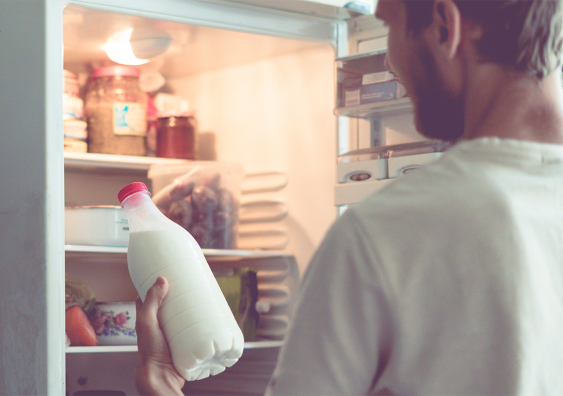Have use-by dates reached their sell-by date?

Next time you’re about to throw food in the rubbish, you should double check the date on it first. Food safety experts say some labelling is confusing – and you could be throwing out food that is actually still perfectly safe to eat.
World Food Safety Day on June 7 was is an annual call for the production and consumption of safe food for the benefit of people, the planet and the economy. It aims to draw attention and inspire action to help prevent, detect and manage foodborne risks.
Dr Alison Jones, a food technologist from UNSW School of Chemical Engineering, says that food labelling can be confusing and stresses the fact that use-by and best-before dates are very different.
“Food manufacturers are responsible for determining the type of date marked on their products to help give consumers a guide as to how long the food product will last before it deteriorates,” she says.
“This is particularly important in determining the quality, nutrition and microbiological safety of food.”
Use-by versus best-before dates
A use-by date indicates that the safety of the product cannot be guaranteed after the displayed date. Food should not be eaten after its use-by date, and it is illegal for retailers to sell food after its use-by date for health and safety reasons.
Foods which display use-by dates are commonly those where the spoilage is not clearly discernible before consumption, for example, fresh pasteurised milk, chilled ready-to-eat foods or deli meats.
Best-before dates indicate that the product may suffer some loss in quality after the displayed date – but should still be safe to eat. That’s provided its packaging is intact and/or it has been properly stored since food can spoil prematurely if it has been subjected to factors including temperature abuse, physical damage, broken packaging, high humidity.
Most foods which display a best-before date should still be safe to eat for a little time after, and retailers can still sell food after the best-before date provided it is still fit for human consumption.
Foods that commonly carry best-before dates are those which do not support the growth of pathogens or, in the case of fresh meat for example, where a later process such as cooking will destroy any bacteria that might be present.
Examples of foods that usually have a best-before date are shelf-stable foods such as retorted canned products and pouches, low water activity foods such as confectionary, tea, freeze-dried coffee, sugar, salt, cereals and dried fruits. Other examples include acidic fermented products such as yogurt or sauerkraut or frozen products.
How do companies determine these date markings?
Companies conduct vigorous shelf-life studies that put the products under various conditions and monitor the type and rate of deterioration in the food. For example, they test the growth of any spoilage microbes, the loss of key nutrients, changes to the food’s water activity or the physical, chemical or biochemical changes that alter the foods quality and safety.
If products require special storage conditions in order for the date markings to be effective, then manufacturers can provide specific storage condition statements on the packaging. This is compulsory in the case of a use-by date where specific storage is essential for the health and safety of the product – so it’s important to keep an eye out for these on food product packaging.
Some foods, such as canned products, don’t need to be labelled with either a use-by or a best-before, even though many do. This is because they have a best-before date of over two years, and it becomes difficult for food manufacturers to give an accurate guide as to how long the quality of the food will last.
How long is a food still safe to eat after its best before date?
That very much depends on the food – the best advice is to look for signs of deterioration, spoilage and/or damage such as mould, slime, rancidity, off-flavours or odours, staling, gas-production or broken packaging.
As a consumer, you should also follow any of the manufacturer’s specific storage instructions to ensure the best-before and use-by dates are effective.
Cecilia Duong is a media and content specialist at the University of New South Wales.














